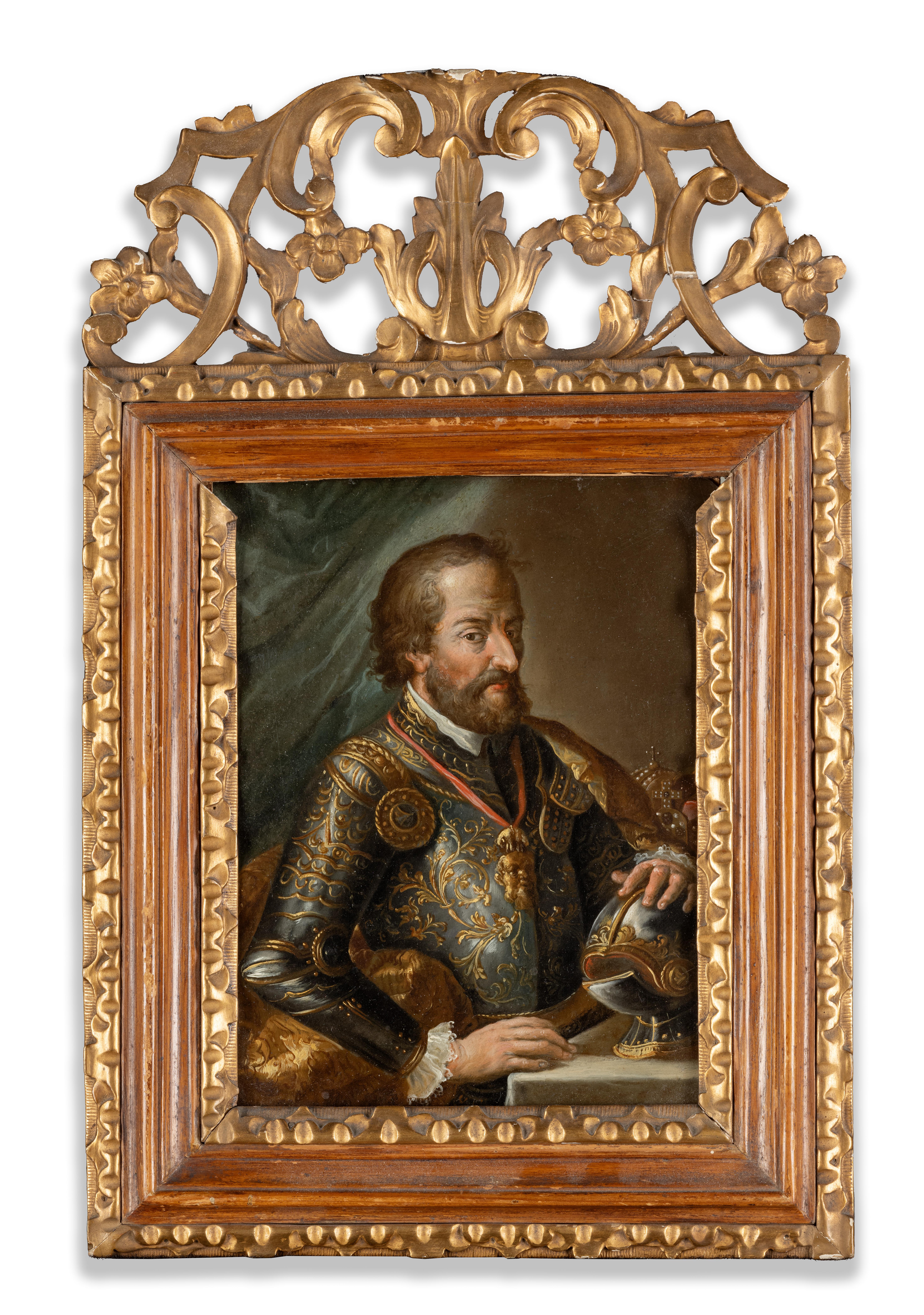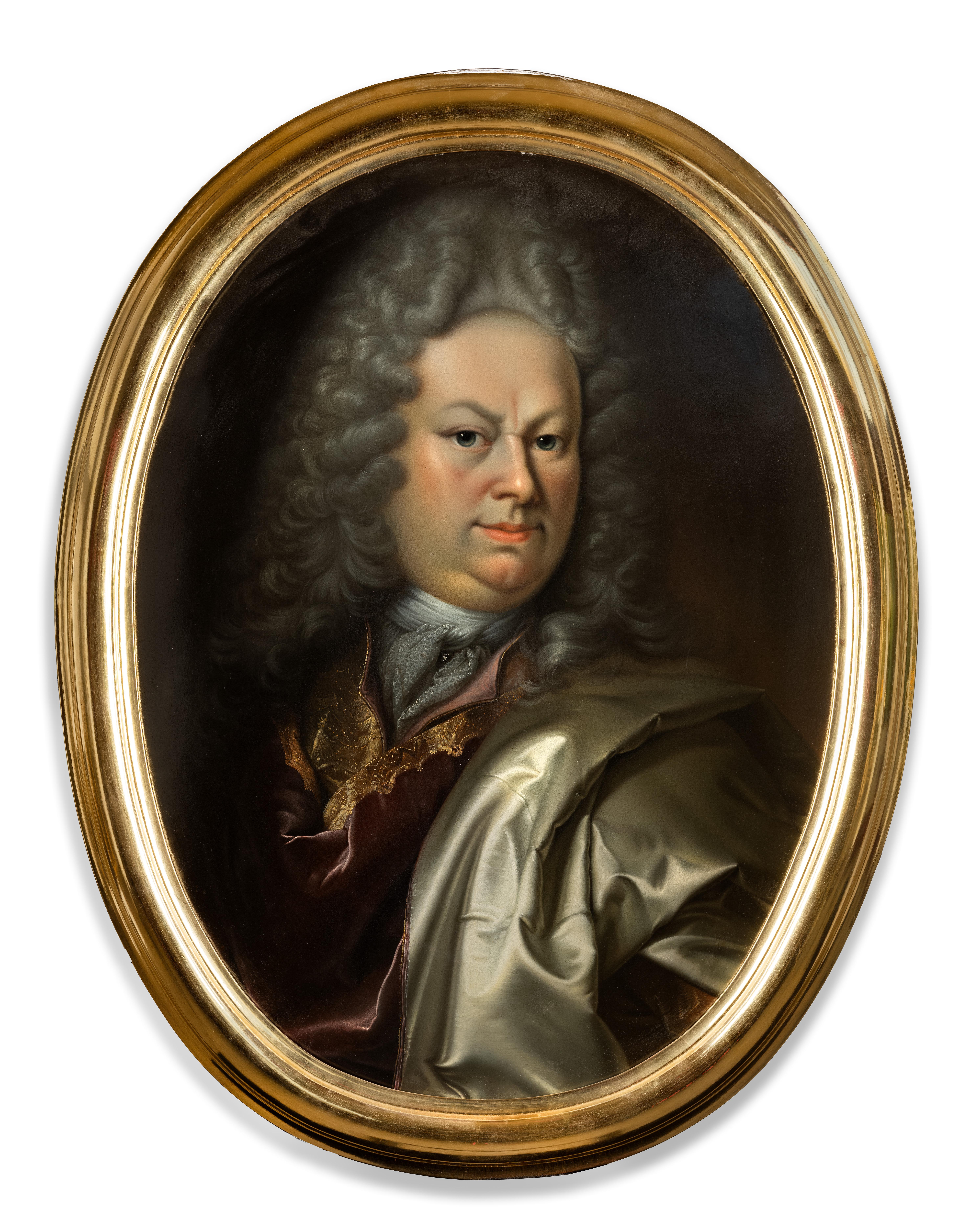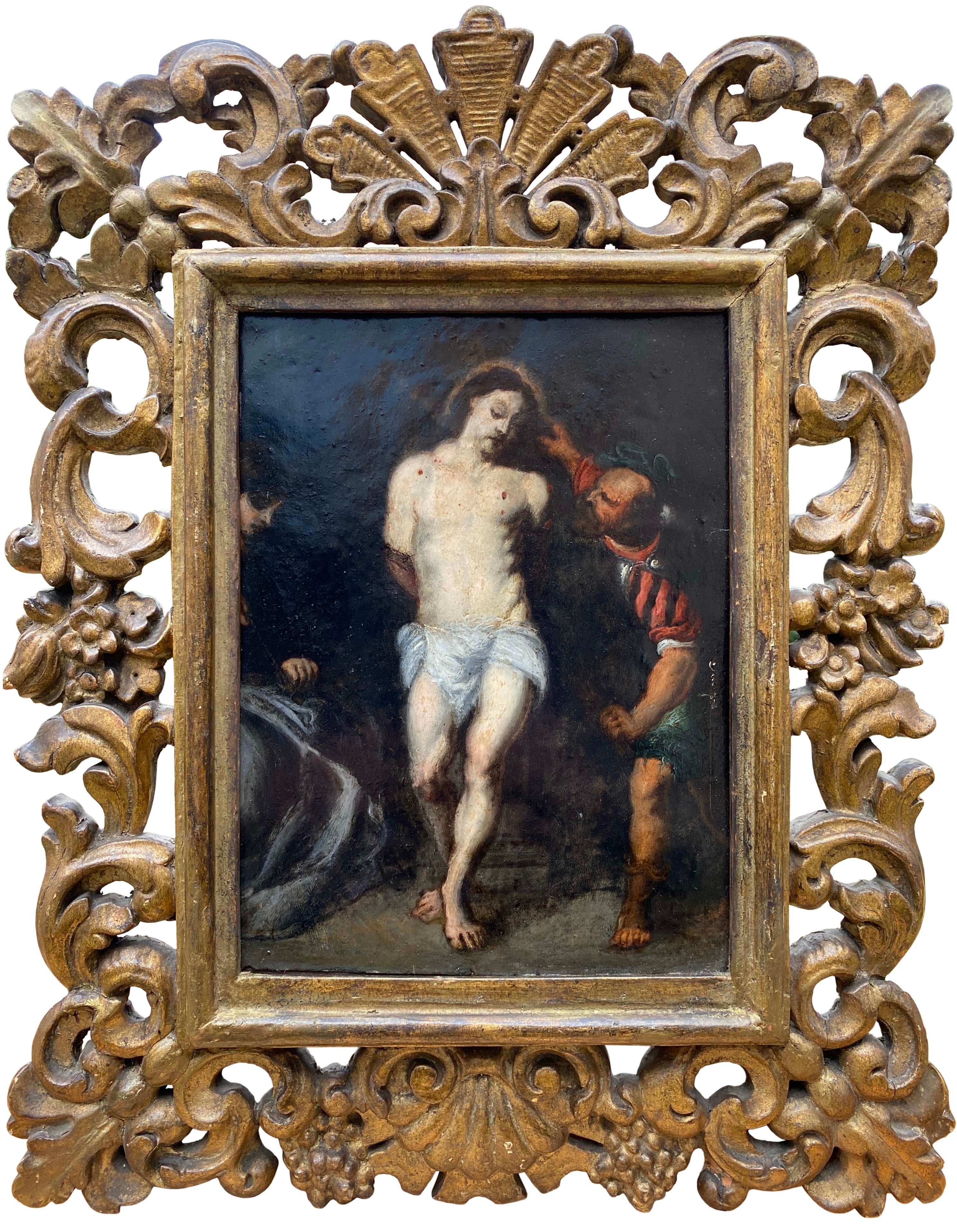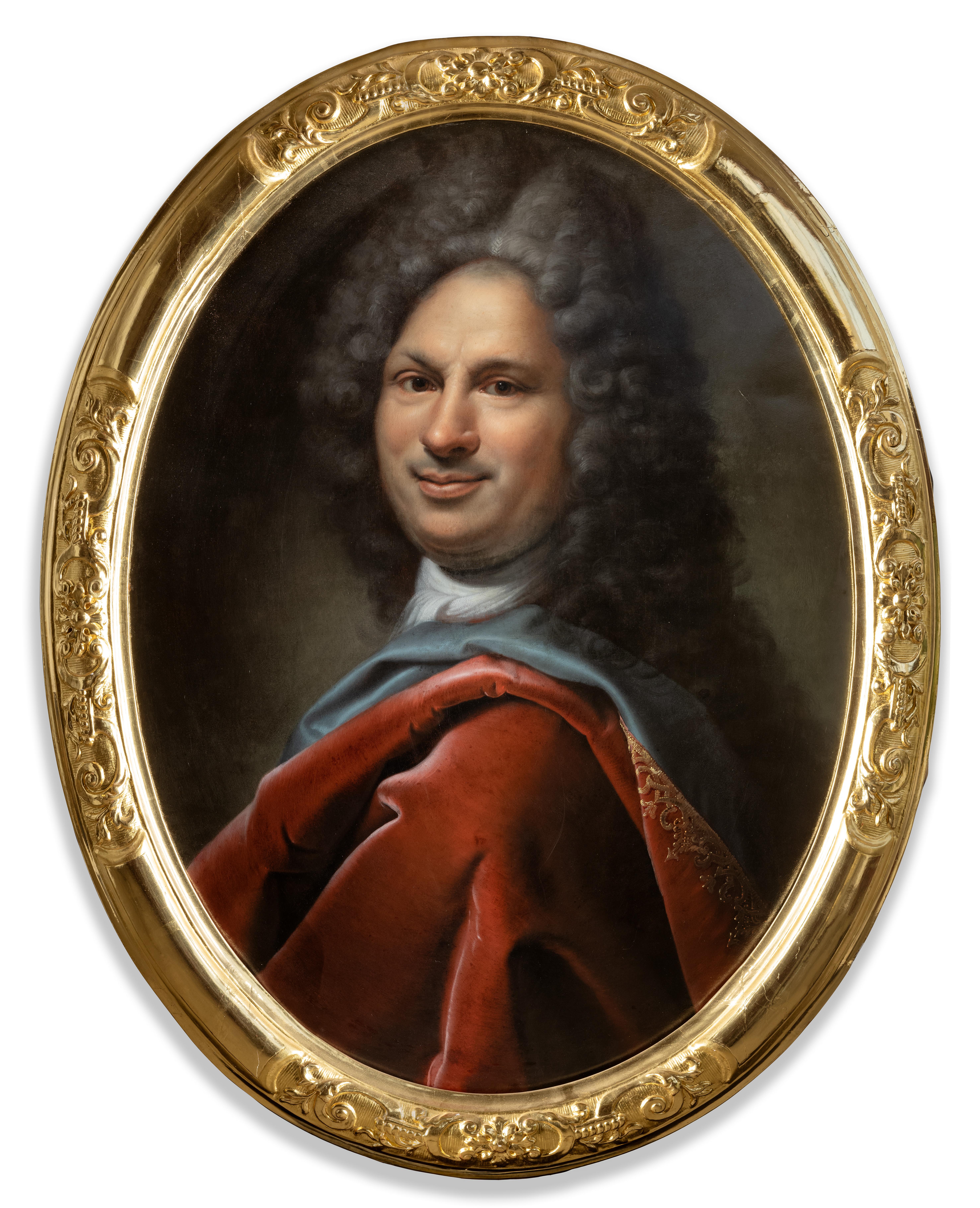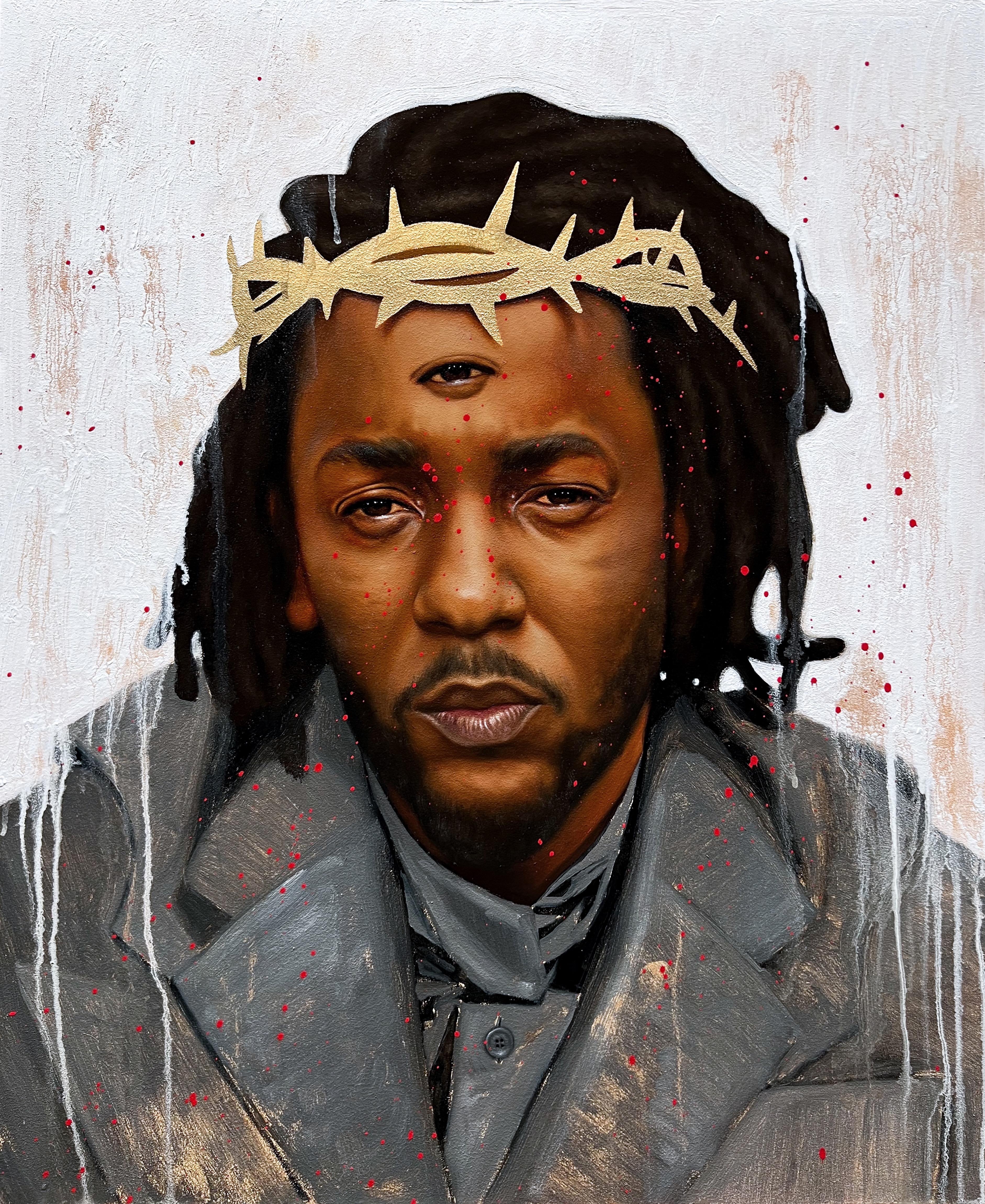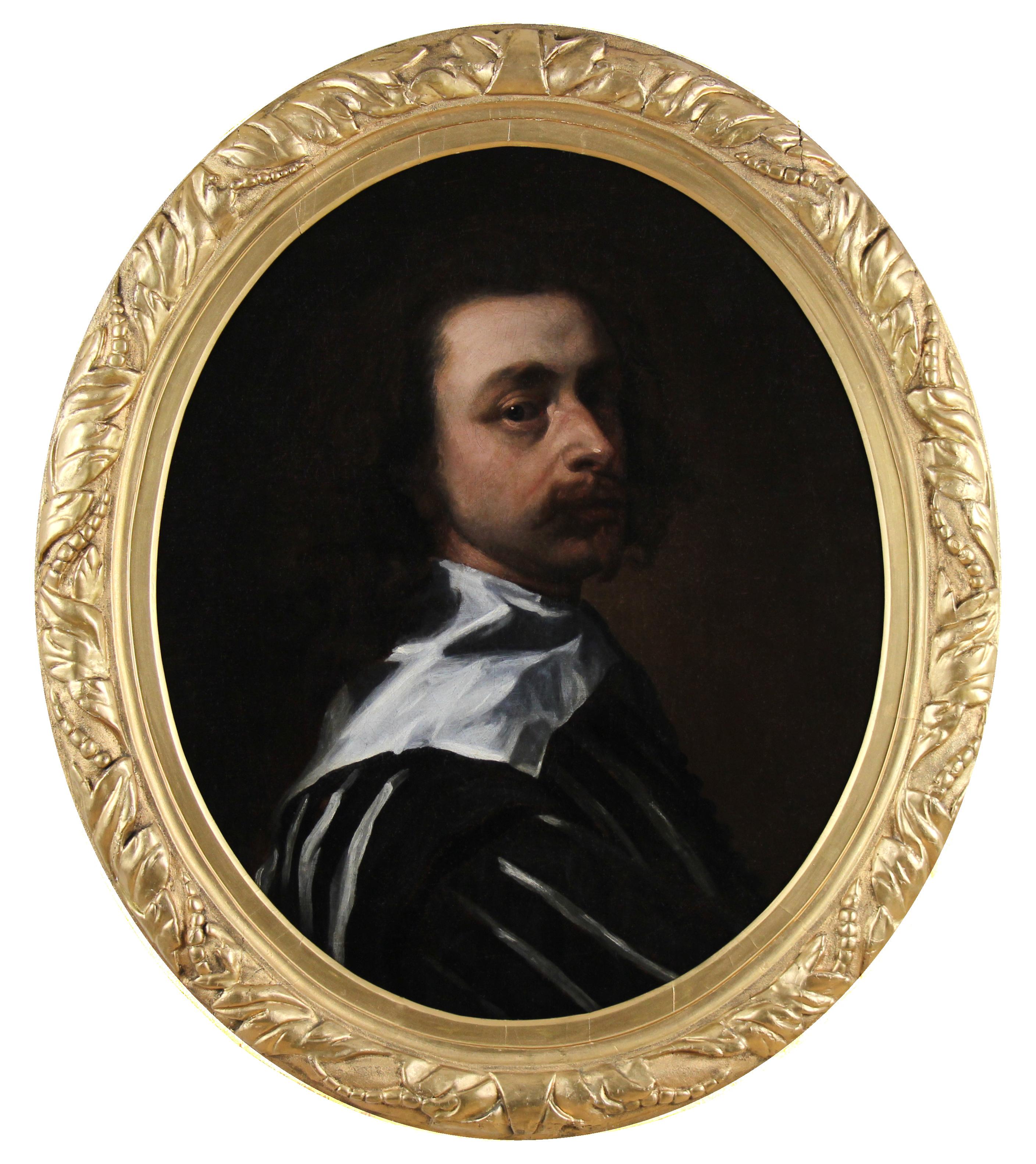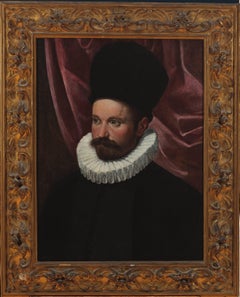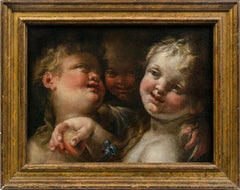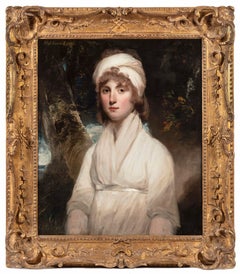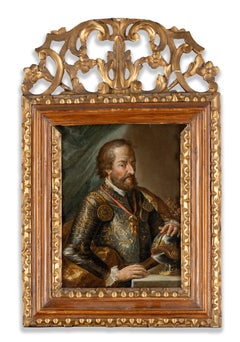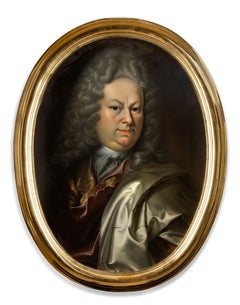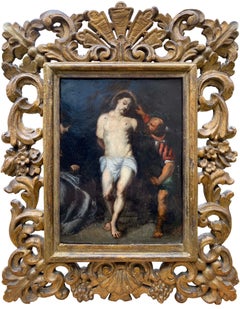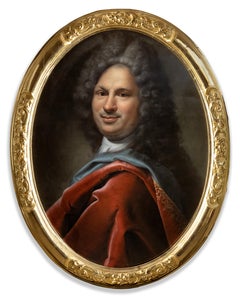Items Similar to Portrait of a Bewigged Gentleman
Want more images or videos?
Request additional images or videos from the seller
1 of 2
Vittore GhislandiPortrait of a Bewigged Gentleman1736
1736
About the Item
Vittore Ghislandi, called Fra Galgario
Provenance:
Robert L. and Bertina Suida Manning, New York, ca. 1966-1996
Private Collection, USA
Exhibited:
“Eighteenth Century European Paintings from the Collection of Robert L. and Bertina Suida Manning,” The Gallery, Dept. of Art, Duke University, Durham, 1966, no. 19.
“Baroque Portraiture in Italy: Works from North American Collections,” John and Mable Ringling Museum of Art, Sarasota, 7 December 1984 - 3 February 1985; and Wadsworth Atheneum, Hartford, 20 March - 20 May 1985, no. 25.
Literature:
John T. Spike, Baroque Portraiture in Italy; Works from North American Collections, Sarasota, 1984, pp. 92-93, cat. no. 25.
Fra Galgario is the author of some of the most astonishing portraits of the late Baroque period. Full of character and remarkable for their expressive poses, these images, usually life-size, are both dramatic and sympathetic. The present work shows the artist working on an unusually small scale, with no loss of impact. The sitter, sporting a stylish wig and an a richly decorated doublet, gazes at the viewer with a frankness and intimacy that are perhaps lost in portraits of a larger format. The tilt of his head, the turn of his body, the placement of his arm akimbo – all are subtle indications of character that underscore the personality conveyed in the depiction of the subject’s features.
Recently, James Middleton has suggested that the subject of this portrait may be the celebrated Italian contralto castrato Francesco Bernardi, called Senesino (1686-1758). Senesino began his career in Venice, but is best known as the primo uomo in George Frederic Handel’s company, the Academy of Music, in London. There he created seventeen leading roles for Handel, including those in Giulio Cesare, Rodelinda, and Orlando. He returned to Italy in 1736.
Portraits of Senesino, such as Alexander van Haecken’s print after a portrait by Thomas Hudson (Fig. 1), show a man of great physical similarity to the sitter in our portrait, with a square brow, cleft chin, and wearing an almost identical costume and wig. Van Haecken’s print is dated 1735, presumably also the date of Hudson’s portrait and the year before Senesino’s return to Italy, where Fra Galgario would have painted him.
This work comes from the distinguished Suida-Manning Collection, begun by the Austrian art historian Wilhelm Suida and continued by his daughter Bertina Suida Manning and her husband Robert Manning, both scholars in the field. The attribution of the present work to Fra Galgario was first proposed by Robert Manning and seconded by John T. Spike. It has recently been confirmed by Dr. Mina Gregori upon first-hand inspection.
- Creator:Vittore Ghislandi (1655-1743, Italian)
- Creation Year:1736
- Dimensions:Height: 3 in (7.62 cm)Width: 2.375 in (6.04 cm)
- Medium:
- Movement & Style:
- Period:
- Condition:
- Gallery Location:New York, NY
- Reference Number:1stDibs: G12060510234
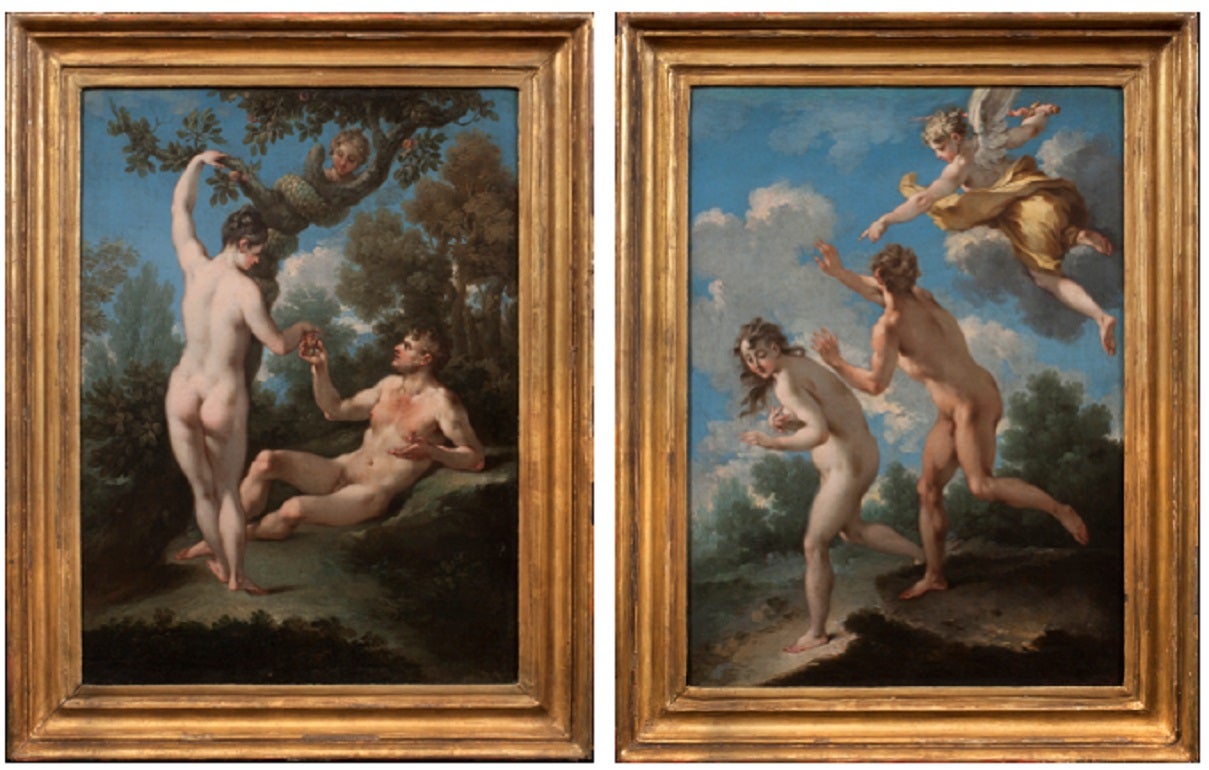
About the Seller
5.0
Recognized Seller
These prestigious sellers are industry leaders and represent the highest echelon for item quality and design.
Established in 1997
1stDibs seller since 2012
20 sales on 1stDibs
Typical response time: 14 hours
- ShippingRetrieving quote...Shipping from: New York, NY
- Return Policy
Authenticity Guarantee
In the unlikely event there’s an issue with an item’s authenticity, contact us within 1 year for a full refund. DetailsMoney-Back Guarantee
If your item is not as described, is damaged in transit, or does not arrive, contact us within 7 days for a full refund. Details24-Hour Cancellation
You have a 24-hour grace period in which to reconsider your purchase, with no questions asked.Vetted Professional Sellers
Our world-class sellers must adhere to strict standards for service and quality, maintaining the integrity of our listings.Price-Match Guarantee
If you find that a seller listed the same item for a lower price elsewhere, we’ll match it.Trusted Global Delivery
Our best-in-class carrier network provides specialized shipping options worldwide, including custom delivery.More From This Seller
View AllPortrait of a Gentleman
By Ippolito Scarsella (Scarsellino)
Located in New York, NY
Provenance: Suida-Manning Collection, New York
Private Collection
Exhibited: Venetian Paintings of the Sixteenth Century, Finch College Museum of Art, New York, October 30-December 15, 1963, no. 31.
Veronese & His Studio in North American Collections, Birmingham Museum of Art, Oct. 1-Nov. 15, 1972, and Montgomery Museum of Fine Arts, Dec. 5-Dec. 31, 1972
Literature: Robert L. Manning, A Loan Exhibition of Venetian Paintings of the Sixteenth Century, exh. cat. New York 1963, cat. no. 31ill., as by Veronese
Stephen Clayton and Edward Weeks, eds., introduction by David Rosand, Veronese & His Studio in North American Collections, Birmingham 1972, as by Veronese, p. 38 ill.
Terisio Pignatti, Veronese, Venice 1976, I, p. 199, cat. no. A225, II, fig. 908, as attributed to Veronese
Terisio Pignatti and Filippo Pedrocco, Veronese; catalogo completo dei dipinti, Florence 1991, no. 54°, as attributed to Veronese.
Terisio Pignatti and Filippo Pedrocco, Veronese, Milan 1995, II, pp. 517-518ill., cat. no. A 56, under attributed paintings, by Veronese and workshop)
John Garton, Grace and Grandeur; The Portraiture of Paolo Veronese, London-Turnhout 2008, p. 237, fig. 77, cat. no. R16, as workshop of Veronese.
Scarsellino’s art is widely regarded as critical link between the Renaissance and the Baroque styles in Emilian painting; not only was he an important transmitter of the heritage of the Renaissance, but he was also open to innovative ideas, and was one of the earliest to experiment with the trend to naturalism that would become fundamental to art of the new century. Born around 1550, he received his earliest training from his father Sigismondo, an architect and painter; it was probably while working at his father’s side as a youth that he acquired the nickname Scarsellino, or “little Scarsella”. After absorbing the principles of his art in Ferrara and Parma, he went to Venice in 1570, staying for four years and working in the shop of Veronese. In the following decade, his art —especially in terms of its piety and its development of landscape— demonstrates a strong sympathy with that of the Carracci, with whom he worked in 1592-1593 at the Palazzo dei Diamanti in Ferrara. Maria Angela Novelli and later Alessandra Frabetti both propose that Scarsellino traveled to Rome, although such a trip has not been documented; if he did travel to Rome, it probably would have occurred during the years that Scarsellino’s colleagues Agostino and Annibale Carracci were there, that is, beginning in 1595 and until 1609. The last decades of Scarsellino’s career again involve stylistic experimentation, this time in a manner that would bring his work very close to the progressive figurative naturalism of Carlo Bononi and prepare the way for Guercino.
The present portrait of a distinguished gentleman had been long thought to be by Paolo Veronese and was in fact attributed to him by such distinguished connoisseurs as Adolfo Venturi and Wilhelm Suida. The portrait’s style is, however, distinct from Veronese’s, although clearly indebted to it, and the attribution to the young Scarsellino is wholly convincing. The painting would then date from the 1570s – a date confirmed by the costume the subject wears. The puffed hat that appears in the painting had a rather short-lived vogue in the early 1570s. One sees it in Giambattista Moroni’s Portrait of Count...
Category
18th Century and Earlier Baroque Portrait Paintings
Materials
Canvas, Oil
Three Angels
By Domenico Piola the Elder
Located in New York, NY
Provenance:
Robert L. and Bertina Suida Manning, New York, until 1996
Private Collection, USA
One of the leading artists in Genoa during the second half of the seventeenth century, Domenico Piola came from a successful family of artists, renowned for their many illusionistic ceiling programs throughout Genoese churches and palaces. A prolific draughtsman and painter, Domenico oversaw an extremely productive studio. In addition to his collaborations with numerous other artists, Domenico also provided many designs for book illustrations and prints that circulated throughout Europe, earning him international exposure and high acclaim in his own day.
As Dr. Anna Orlando has indicated (written communication), the present work is an early work by Piola, datable from the late 1640s. At this time the young artist came strongly under the influence of Castiglione and Valerio Castello, while admiring the works of Giulio Cesare Procaccini. Piola’s works from this period are exuberant and fluid, and the artist’s love of portraying children is evident from the angels and putti that populate both his altarpieces and more intimate paintings.
The present work depicts three angels...
Category
17th Century Baroque Figurative Paintings
Materials
Canvas, Oil
Head of a Classical Poet (Socrates?)
By Pier Francesco Mola
Located in New York, NY
Provenance:
Possibly Antonio Amici Moretti, Rome, 1690
Roy Clyde Gardner, Union, Mississippi, 1970s until 2004; by whom given to:
Mississippi Band of Choctaw Indians, 2004-2010
Lit...
Category
17th Century Baroque Paintings
Materials
Canvas, Oil
Portrait of Laura Keppel, later Lady Southampton
By Sir John Hoppner
Located in New York, NY
Inscribed, upper left: “Miss Laura Keppel”
Provenance: Commissioned from the artist and by descent in the Keppel family estate, Lexham Hall, Norfolk, to:
Major Bertram William Arnol...
Category
18th Century Paintings
Materials
Canvas, Oil
Portrait of an Artist (possibly a Self-Portrait)
Located in New York, NY
Provenance:
Bradley Collection.
Private Collection, Upperville, Virginia.
Literature:
Katlijne van der Stighelen and Hans Vlieghe, Rubens: Portraits of Unidentified and Newly Identified Sitters painted in Antwerp, Corpus Rubenianum Ludwig Burchard, vol. 19, pt. 3, London and Turnhout, 2021, under cat. no. 189, p. 161, and fig. 75.
This painting had previously been considered to be by an anonymous Tuscan painter of the sixteenth century in the orbit of Agnolo Bronzino. While the painting does in fact demonstrate a striking formal and compositional similarity to Bronzino’s portraits—compare the nearly identical pose of Bronzino’s Portrait of a Young Man in the Metropolitan Museum of Art (Fig. 1)—its style is completely foreign to Italian works of the period. That it is painted on an oak panel is further indication of its non-Italian origin.
This portrait can in fact be confidently attributed to the Antwerp artist Huybrecht Beuckelaer. Huybrecht, the brother of Joachim Beuckelaer, has only recently been identified as the author of a distinct body of work formerly grouped under the name of the “Monogrammist HB.” In recent studies by Kreidl, Wolters, and Bruyn his remarkable career has been delineated: from its beginnings with Joachim in the workshop of Pieter Aertsen; to his evident travels to Italy where, it has been suggested, he came into contact with Bronzino’s paintings; to his return to Antwerp, where he seems to have assisted Anthonis Mor in painting costume in portraits; to his independent work in Antwerp (where he entered the Guild of Saint Luke in 1579); and, later to his career in England where, known as “Master Hubberd,” he was patronized by the Earl of Leicester. Our painting was recently published by Dr. Katlijne van der Stighelen and Dr. Hans Vlieghe in a volume of the Corpus Rubenianum, in which they write that the painting “has a very Italian air about it and fits convincingly within [Beuckelaer’s] oeuvre.” Stighelen and Vlieghe compare the painting with Peter Paul Ruben’s early Portrait of a Man, Possibly an Architect or Geographer in the Metropolitan Museum of Art, in which the sitter holds a compass and wears a similarly styled doublet (Fig. 2).
Huybrecht both outlived and travelled further afield than his brother Joachim, who made his career primarily in Antwerp. Whereas Joachim was the main artistic inheritor of their uncle and teacher, Pieter Aertson, working in similar style and format as a specialist in large-scale genre and still-life paintings, Huybrecht clearly specialized as a painter of portraits and was greatly influenced by the foreign artists and works he encountered on his travels. His peripatetic life and his distinctly individual hand undoubtedly contributed to the fact his career and artistic output have only recently been rediscovered and reconstructed. His periods abroad seem to have overlapped with the mature phase of his brother Joachim’s career, who enrolled in the Antwerp Guild of Saint Luke much earlier than his brother, establishing himself as an independent painter in 1560. Joachim’s activity was confined to the following decade and half, and his latest work dates from the last year of his life, 1574. Our portrait was likely produced in the late 1560s, a dating supported by the dendrochronological investigation performed by Dr. Peter Klein, which established that it is painted on an oak panel with an earliest felling date of 1558 and with a fabrication date of ca. 1566.
This painting presents a portrait of an artist, almost certainly Huybrecht’s self-portrait. The young sitter is confidently posed in a striking patterned white doublet with a wide collar and an abundance of buttons. He stands with his right arm akimbo, his exaggerated hands both a trademark of Huybrecht and his brother Joachim’s art, as well as a possible reference to the “hand of the artist.” The figure peers out of the painting, interacting intimately and directly with the viewer, as we witness him posed in an interior, the tools and results of his craft visible nearby. He holds a square or ruler in his left hand, while a drawing compass...
Category
16th Century Old Masters Paintings
Materials
Oil, Panel
Portrait of George and Edward Finch-Hatton in Van Dyck Dress
By David Martin
Located in New York, NY
Appointed Portrait Painter to the Prince of Wales in Scotland in 1785, David Martin was the leading Scottish portrait painter of his generation. The artist is best known in the United States for his portrait of Benjamin Franklin, which is in the White House collection, Washington, D.C. The sitters depicted in this double portrait were the sons of the British diplomat Edward Finch-Hatton. George (1747-1823), later of Eastwell Park, Kent, is shown seated, reading an ancient charter or medieval manuscript...
Category
18th Century and Earlier Paintings
Materials
Canvas, Oil
You May Also Like
Portrait of Emperor Ferdinand I. Prague School, 17th Century, Copper, Old Master
Located in Greven, DE
Unknown artist
Prague School
Portrait of Emperor Ferdinand I. (1503-1564)
17th century
Oil on copper, 21,3 x 16,8 cm
Provenance:
Private collection, Pennsylvania, until 2016
This work by an unknown artist is a semi-portrait in predominantly brown-green tones.
brown-green tones of the emperor Ferdinand I, who was crowned emperor in 1558.
Ferdinand I of the Habsburg dynasty, who was crowned emperor in 1558.
in a suit of armour lavishly decorated with gold ornaments.
The portrait of Ferdinand...
Category
17th Century Baroque Portrait Paintings
Materials
Copper
$17,008 Sale Price
40% Off
Portrait of a Gentleman, Halung, Court Painter Schildbach, Gotha, Convex Copper
Located in Greven, DE
Christian Schildbach was a very talented artist with his own style.
Art painter in Plauen, then court painter in Dresden; around 1706 art painter in Vienna, also active in Bamberg (...
Category
18th Century Baroque Portrait Paintings
Materials
Copper
The Flagellation of Christ, Old Master, Flemish School, Oil on copper
Located in Knokke, BE
The Flagellation of Christ
Old Master
Flemish School
17th century
Medium: Oil on copper
Dimensions: Image size 22 x 17 cm, frame size 39 x 31 cm
Category
17th Century Baroque Portrait Paintings
Materials
Copper
Self Portrait of Schildbach, Court Painter Schildbach, Gotha, Convex Copper
Located in Greven, DE
Christian Schildbach was a very talented artist with his own style.
Art painter in Plauen, then court painter in Dresden; around 1706 art painter in Vienna, also active in Bamberg (...
Category
18th Century Baroque Portrait Paintings
Materials
Copper
"LIDER SIN MIEDO" Figurative Portrait Painting 30" x 24" inch by Isaac Pelayo
By Isaac Pelayo
Located in Culver City, CA
"LIDER SIN MIEDO" Figurative Portrait Painting 30" x 24" inch by Isaac Pelayo
Medium: oil, liquid gold, and aerosol on wood
ABOUT THE ARTIST:
Isaac Pelayo is a head on crash col...
Category
21st Century and Contemporary Baroque Figurative Paintings
Materials
Gold
Oil On Canvas Self Portrait of the artist Sir Anthony Van Dyck 18Th c
Located in Gavere, BE
"Oil On Canvas Self Portrait After Sir Anthony Van Dyck"
Follower of Sir Anthony van Dyck (Flemish painter, 1599-1641), Self portrait Oil on canvas (doubled),
Probably end 18th centu...
Category
Late 18th Century Baroque Figurative Paintings
Materials
Gold Leaf
$23,494 Sale Price
20% Off
Recently Viewed
View AllMore Ways To Browse
18th Century Portrait Of Gentleman
18th Portrait Gentleman
18th Century Portrait Of A Gentleman
Painted Eighteenth Century Portrait
George Frederic
Large Sporting Oil Paintings
Late 18th Century American Oil Paintings
Wig Heads
Giulio Cesare
Alexander James London
James L Thomas
Wig 18th Century
Robert Wilhelm
18th Century American Oil Portrait
18th Century American Portrait Gentleman
Mina Alexander
Russian School Oil
Unframed Vintage Oil Painting
